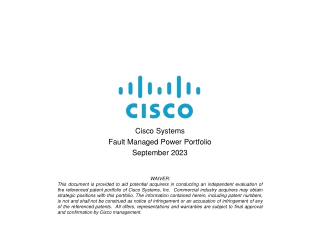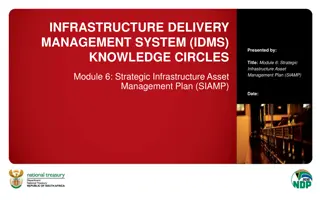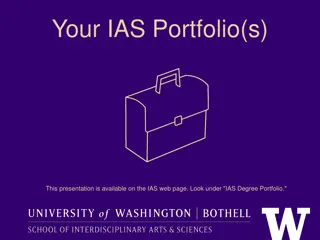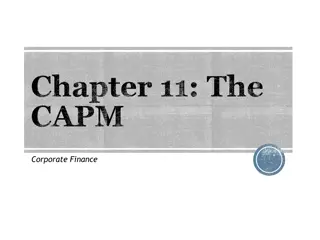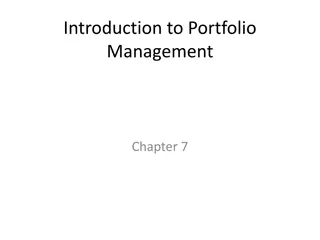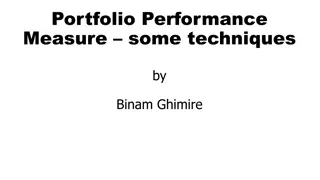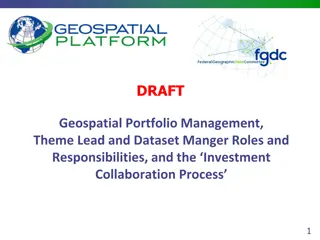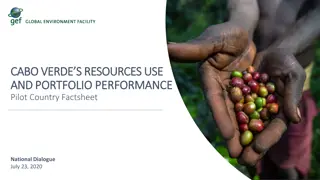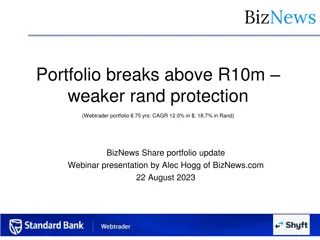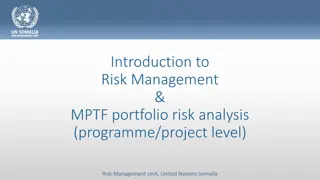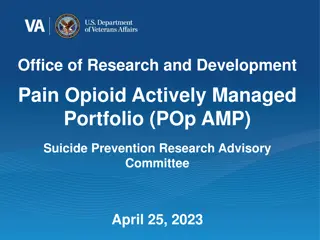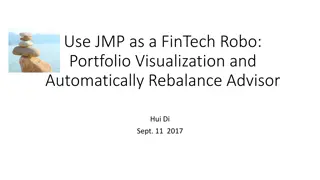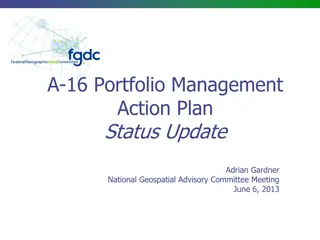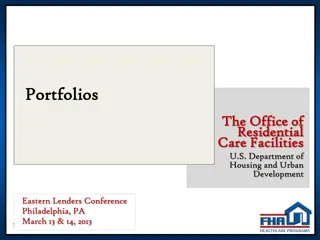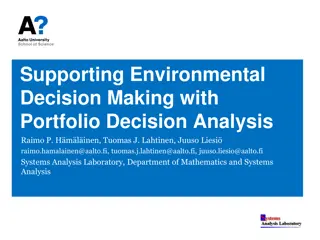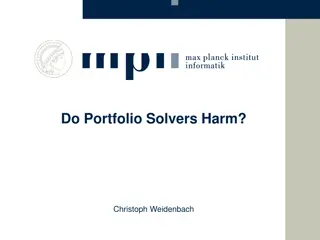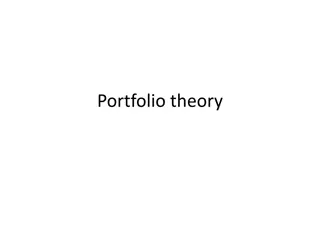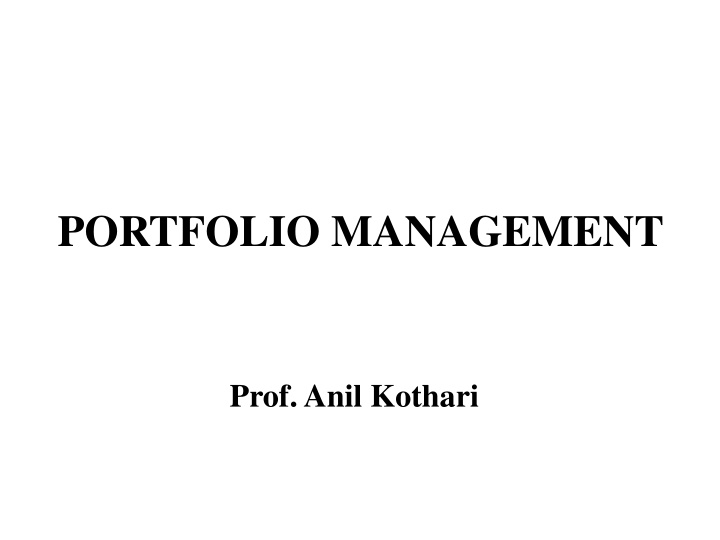
Portfolio Management and Capital Asset Pricing Model (CAPM)
Explore the relationship between risk and expected return in portfolio management through the Security Market Line, the Capital Market Line, and the Capital Asset Pricing Model (CAPM). Learn how these concepts help in determining the appropriate pricing and expected returns in financial markets.
Download Presentation

Please find below an Image/Link to download the presentation.
The content on the website is provided AS IS for your information and personal use only. It may not be sold, licensed, or shared on other websites without obtaining consent from the author. If you encounter any issues during the download, it is possible that the publisher has removed the file from their server.
You are allowed to download the files provided on this website for personal or commercial use, subject to the condition that they are used lawfully. All files are the property of their respective owners.
The content on the website is provided AS IS for your information and personal use only. It may not be sold, licensed, or shared on other websites without obtaining consent from the author.
E N D
Presentation Transcript
PORTFOLIO MANAGEMENT Prof. Anil Kothari
The security market line The culmination of the sequence of conceptual building blocks is CAPM s risk/expected return relationship. This fundamental result follows from the proposition that only systematic risk, measured by beta ( ), matters. Securities are priced such that: Rs= Rf+ risk premium Rs= Rf+ s(Rm Rf) Where: Rs= the stock s expected return (and the company s cost of equity capital). Rf= the risk-free rate. Rm= the expected return on the stock market as a whole. s= the stock s beta. This risk/expected return relationship is called the security market line (SML). I have illustrated it graphically in Exhibit III. As I indicated before, the expected return on a security generally equals the risk-free rate plus a risk premium. In CAPM the risk premium is measured as beta times the expected return on the market minus the risk-free rate. The risk premium of a security is a function of the risk premium on the market, Rm Rf, and varies directly with the level of beta. (No measure of unsystematic risk appears in the risk premium, of course, for in the world of CAPM diversification has eliminated it.) Security Market Line Slope The slope of the security market line represents the market risk premium, i.e. the excess return over the market return. The market risk premium compensates for the additional systematic risk associated with the security. Therefore, the higher the risk, the higher the market risk premium for the security, and the higher the expected overall return for the security. 2
In the freely competitive financial markets described by CAPM, no security can sell for long at prices low enough to yield more than its appropriate return on the SML. The security would then be very attractive compared with other securities of similar risk, and investors would bid its price up until its expected return fell to the appropriate position on the SML. Conversely, investors would sell off any stock selling at a price high enough to put its expected return below its appropriate position. The resulting reduction in price would continue until the stock s expected return rose to the level justified by its systematic risk. 3
Capital Market Line is a theoretical concept that represents all the portfolios that optimally combine the risk-free rate of return and the market portfolio of risky assets. Security Market Line measures the risk through beta, which helps to find the security s risk contribution to the portfolio. The differences between the capital market line and the security market line: Capital market line: CML shows the tradeoff between expected return and total risk. CML considers both systematic and unsystematic risk. CML is the graphical presentation of the equilibrium relationship between expected return and total risk for efficiency diversified portfolios. The slope of the CML shows the market price of risk for efficient portfolios. The CML is a line that is used to show the rates of return, which depends on risk-free rates of return and levels of risk for a specific portfolio. Slope of the CML = (Rm Rf) / m 4
Security market line: SML shows the tradeoff between the required rate of return and systematic risk. SML considers only systematic risk. SML is the graphical presentation of CAPM. The slope of the SML shows the differences between the required rate of return on the market index and the risk-free rate. SML is a graphical representation of the market s risk and returns at a given time. The slope of the SML = (Rm Rf). Most importantly, SML is used to determine whether more assets/investments can be added to the existing market portfolio. The risk running individually in these diverse market portfolios tells the investor about his undervalued and overvalued investments and thus this system of calculation is known as systematic risk. 5
Determining the Expected Rate of Return for a Risky Asset Assume: RFR = 6% (0.06) RM = 12% (0.12) Implied market risk premium = 6% (0.06) RFR ) E(R i + = i (R - RFR) M E(RA) = 0.06 + 0.70 (0.12-0.06) = 0.102 = 10.2% E(RB) = 0.06 + 1.00 (0.12-0.06) = 0.120 = 12.0% E(RC) = 0.06 + 1.15 (0.12-0.06) = 0.129 = 12.9% E(RD) = 0.06 + 1.40 (0.12-0.06) = 0.144 = 14.4% E(RE) = 0.06 + -0.30 (0.12-0.06) = 0.042 = 4.2% 6
Parameters of Comparison CML SML Full form Capital Market Line Security Market Line SML determines the market risk you are running with your investment. CML determines your average rate of success or loss in the market share. Definition Defines both functioning and non-functioning portfolios. Defines functioning portfolios. Portfolios Functioning More efficient. Less efficient. To describe only market portfolios and risk-free investments. To describe overall security factors. Agenda 7


